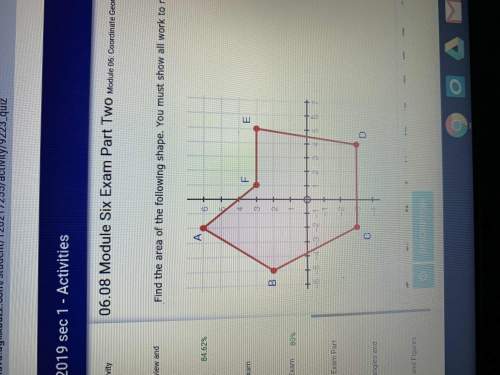Which is a counterexample that disproves the conjecture?
for all real numbers n, 2^n ≥...

Mathematics, 05.02.2020 07:44 evere11605
Which is a counterexample that disproves the conjecture?
for all real numbers n, 2^n ≥ 1.
a. n = 0
b. n = 0.5
c. n = –1
d. n = 3

Answers: 2
Another question on Mathematics

Mathematics, 21.06.2019 22:00
Select the conic section that represents the equation. 3x2 + 3y2 -2x + 4 = 0
Answers: 2

Mathematics, 21.06.2019 22:00
For [tex]f(x) = 4x + 1[/tex] and (x) = [tex]g(x)= x^{2} -5,[/tex] find [tex](\frac{g}{f}) (x)[/tex]a. [tex]\frac{x^{2} - 5 }{4x +1 },x[/tex] ≠ [tex]-\frac{1}{4}[/tex]b. x[tex]\frac{4 x +1 }{x^{2} - 5}, x[/tex] ≠ ± [tex]\sqrt[]{5}[/tex]c. [tex]\frac{4x +1}{x^{2} -5}[/tex]d.[tex]\frac{x^{2} -5 }{4x + 1}[/tex]
Answers: 2

Mathematics, 21.06.2019 22:00
How do you write a paragraph proof to prove that the corresponding angles shown are congruent
Answers: 2

Mathematics, 21.06.2019 23:40
For a function f(x), a) if f(7) = 22 then f^-1(22) = b) f^-1(f(c)) =
Answers: 2
You know the right answer?
Questions

History, 13.01.2021 20:20

History, 13.01.2021 20:20

Social Studies, 13.01.2021 20:20


Mathematics, 13.01.2021 20:20


Chemistry, 13.01.2021 20:20


Health, 13.01.2021 20:20



Mathematics, 13.01.2021 20:20


Mathematics, 13.01.2021 20:20




History, 13.01.2021 20:20

Mathematics, 13.01.2021 20:20




